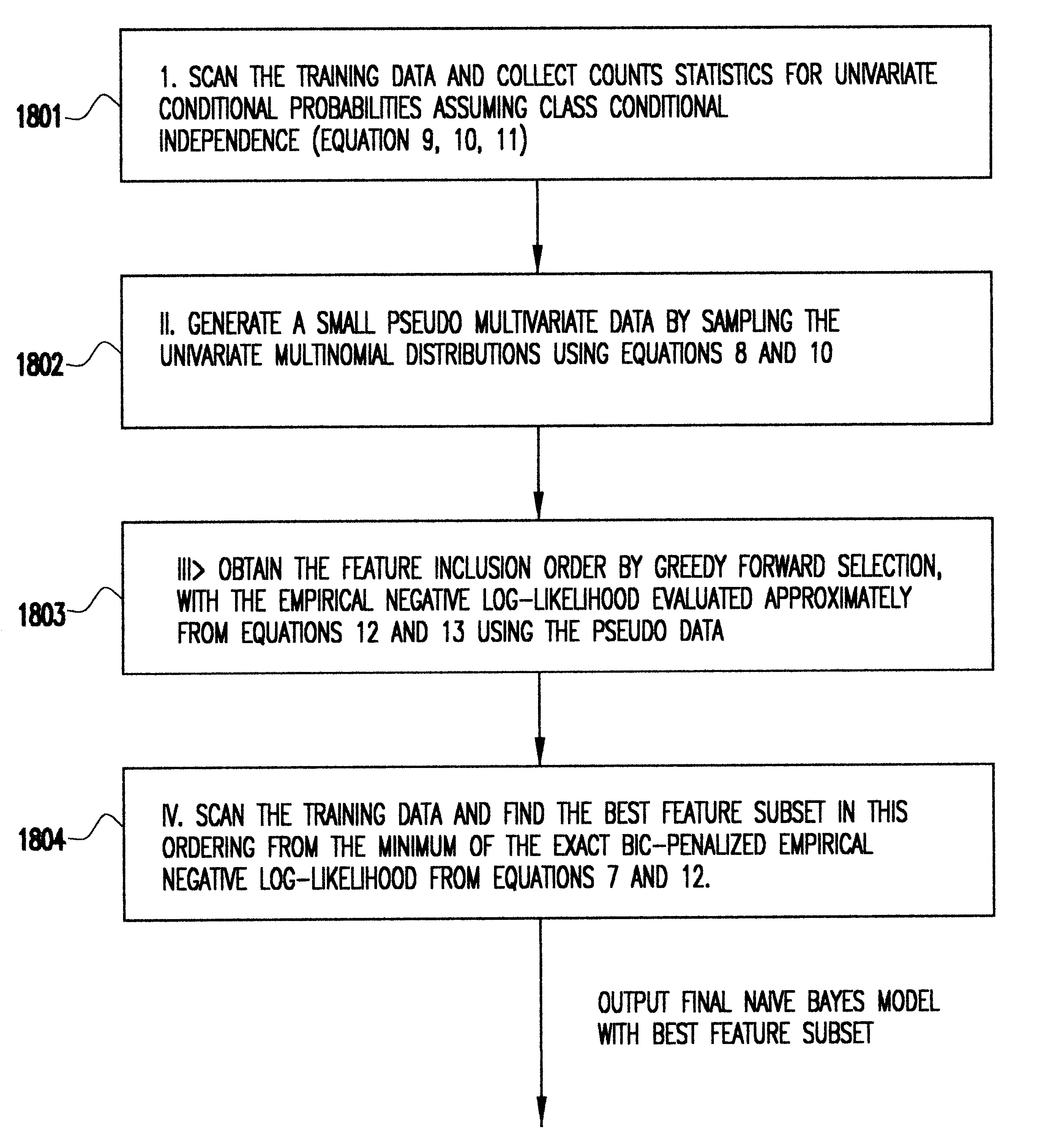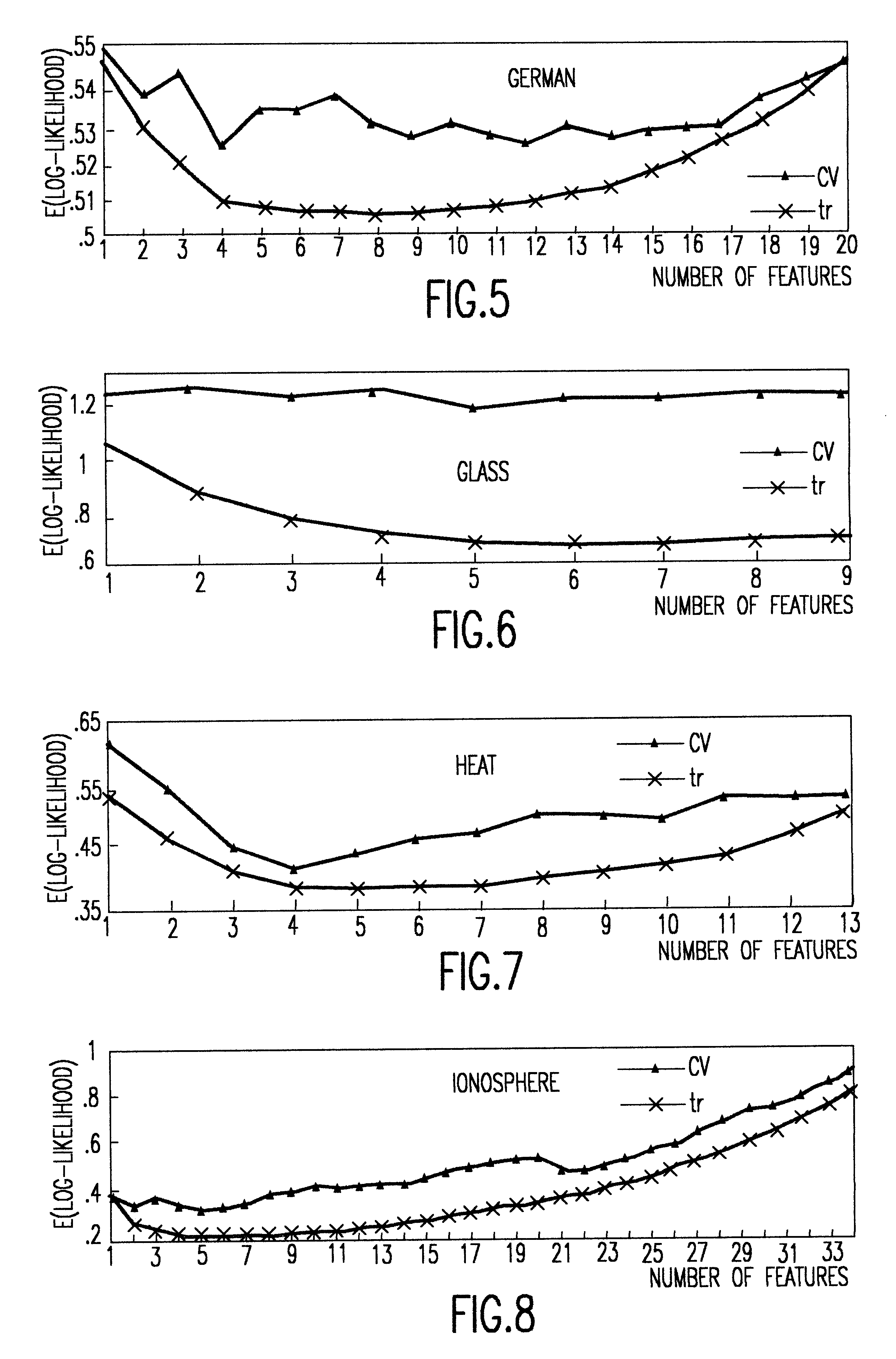Using simulated pseudo data to speed up statistical predictive modeling from massive data sets
a statistical predictive model and pseudo data technology, applied in knowledge based models, instruments, computing, etc., can solve the problems of unsatisfactory heterogeneous sub-sampling, prohibitively expensive computational costs of existing statistical procedures, and potentially huge training data sets
- Summary
- Abstract
- Description
- Claims
- Application Information
AI Technical Summary
Problems solved by technology
Method used
Image
Examples
Embodiment Construction
Notation
Let y denote the categorical response variable that takes on K values denoted by 1, 2, . . ., K, respectively. Let the set of J covariate predictors for y be denoted by X.sub.1, X.sub.2, . . . , X.sub.J, respectively. The corresponding vector of covariates is denoted by
X=[X.sub.1 X.sub.2. . . X.sub.J ].sup.T. (1)
We now let
.theta..sub.k (x)=P(y=k.vertline.X), (2)
denote the conditional probability that y takes the value k (note that ##EQU1##
In many cases, the objective of the predictive modeling is to classify the categorical response based on the measured covariates. The optimal Bayes classification is given by
l(X)=arg max.sub.k.theta..sub.k (X), (3)
The estimates .theta..sub.k (X) for .theta..sub.k (X)in equation (3) are obtained from the training data set {x.sub.i, y.sub.i }.sub.i=1.sup.N by some statistical estimation procedure (e.g., maximum likelihood). These estimates are used in equation (3) to obtain corresponding estimates l.sub.k (X) for l.sub.k (X). Previous work (e...
PUM
 Login to View More
Login to View More Abstract
Description
Claims
Application Information
 Login to View More
Login to View More - R&D
- Intellectual Property
- Life Sciences
- Materials
- Tech Scout
- Unparalleled Data Quality
- Higher Quality Content
- 60% Fewer Hallucinations
Browse by: Latest US Patents, China's latest patents, Technical Efficacy Thesaurus, Application Domain, Technology Topic, Popular Technical Reports.
© 2025 PatSnap. All rights reserved.Legal|Privacy policy|Modern Slavery Act Transparency Statement|Sitemap|About US| Contact US: help@patsnap.com



